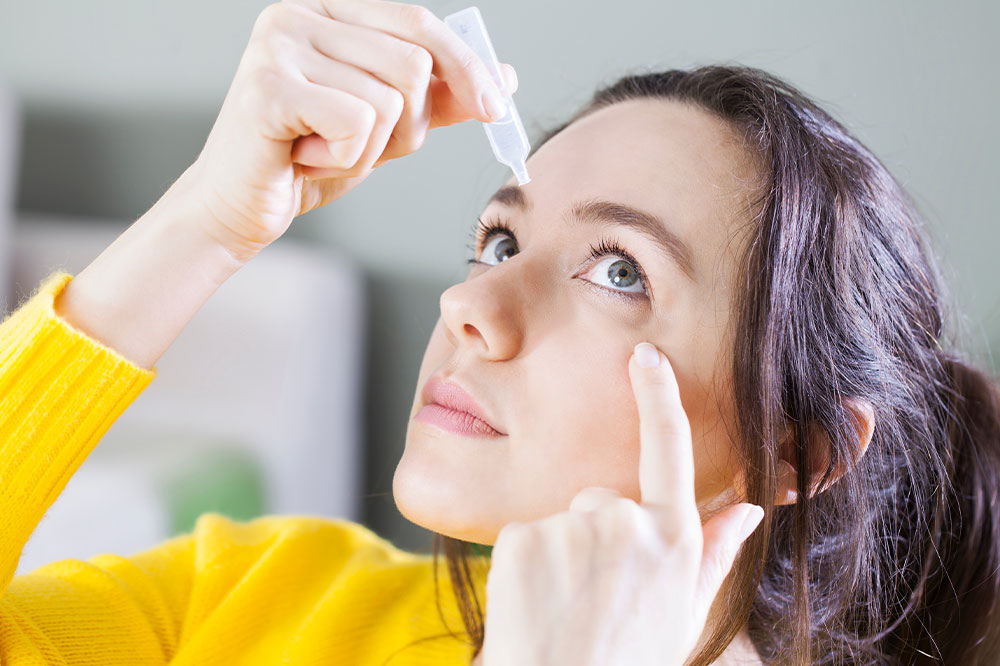
Dry eyes – Symptoms, home remedies, and more
Our eyes need tears to function properly and stay healthy. They are clear liquid made of water, oil, mucus, and other ingredients produced by glands above the eyes. Dry eye occurs when there aren’t enough tears in the eyes. Although having dry eyes isn’t usually a serious problem, it’s quite uncomfortable and can significantly interfere with one’s daily routine. This article explains everything about dry eye and how to treat the condition.
Types of dry eyes
There are the two main types of dry eyes:
Aqueous deficient dry eye
This type of dry eye occurs when the glands above the eyes, called lacrimal glands, don’t create sufficient tears. Aqueous deficient dry eye is usually the result of aging or some underlying medical condition, such as diabetes, Sjogren’s syndrome, or rheumatoid arthritis.
Evaporative dry eye
Evaporative dry eye is when the tears dry up too quickly. This typically happens when the meibomian glands, located on the edge of the eyelids, don’t secrete enough oil, which is a component that prevents tears from evaporating quickly. This type of dry eye is commonly seen in people with eyelash dandruff (blepharitis) and ocular rosacea.
Signs and symptoms
Dry eyes typically affect both the eyes and can produce a range of signs and symptoms, such as:
- A stinging or burning sensation
- Itchiness
- A gritty sensation, as if there are sand particles in the eyes
- Pain or redness
- Stringy mucus in and around the eyes
- Eyestrain that occurs quickly from reading or computer use
- Sensitivity to light
- Blurry vision
- Difficulty wearing contact lenses
Causes and risk factors
Dry eyes are the result of insufficient eye lubrication. This is either because your tear ducts aren’t producing enough tears, or tears are evaporating at an unusually rapid rate. Sometimes, it can be a combination of both. Several factors increase an individual’s likelihood of developing dryness in the eyes. These risk factors include:
- Staring at a computer or mobile screen for prolonged periods
- Not blinking enough
- Environmental irritants, such as wind, smoke, air-conditioning, or low humidity
- Hormonal changes due to pregnancy, menopause, contraceptive use, and hormone replacement therapy
- Diseases that affect the ability to produce tears, like Sjogren’s syndrome and rheumatoid arthritis.
- Long-term use of contact lenses
- Eye surgery, such as LASIK or cataract surgery
Home remedies
Here are some effective home remedies that can help relieve dry eyes:
Blink more frequently and consciously
Not blinking enough, especially when using laptops and smartphones, is a common cause of dry eyes. Blinking deliberately and fully can help open up glands, thus relieving dryness and promoting eye health.
Thoroughly wash the eyelids and lashes
Washing eyelids and lashes helps remove bacteria that contribute to dry eyes. It’s best to use preservative-free eyelid wipes with warm water to gently clean the upper and lower eyelids.
Purchase a humidifier
Dry or cold climates can make the atmosphere air dry, which can lead to dryness in the eyes. A humidifier increases relative humidity indoors, helping soothe dry eye symptoms.
Best and worst foods for dry eyes
Food choices can either cause or relieve dry eyes, which is why it is important.
Foods to eat
One can consume healthy fats like Omega-3 fatty acids; a range of antioxidants, including vitamin E and C; and eye-friendly nutrients, such as folate and zinc to ease dry eye symptoms. This will also help in promoting eye health. Some of the best foods to acquire these nutrients are salmon, tuna, walnuts, chia seeds, beans, kale, and spinach.
Foods to avoid
In general, any food that triggers or increases inflammation levels in the body must be avoided. Sugar, artificial sweeteners, and refined carbohydrates have a bad reputation when it comes to inflammation. So, steer clear of foods full of refined carbs, like white rice, white bread, pizza, and pasta. It’s also best to avoid sugar-rich foods like pastries, candies, and fruit juices.
Treatments
The right treatment depends mainly on the underlying cause of the condition. Some common treatment options are as follows:
Artificial drop or ointments
This is the most popular treatment for dry eyes. Artificial tear drops and ointments are designed to increase lubrication and alleviate the dryness of the eyes. Some treatment options are usually helpful for mild or occasional dry eyes. But a severe, persistent condition may require prescription treatment.
Temporary or permanent punctal occlusion
If required, doctors may close the puncta, which are ducts that drain tears from the eyes. Initially, a doctor typically uses a temporary plug made of collagen, which dissolves over time, to close the ducts. If it works, they may use permanent plugs made of silicone.




